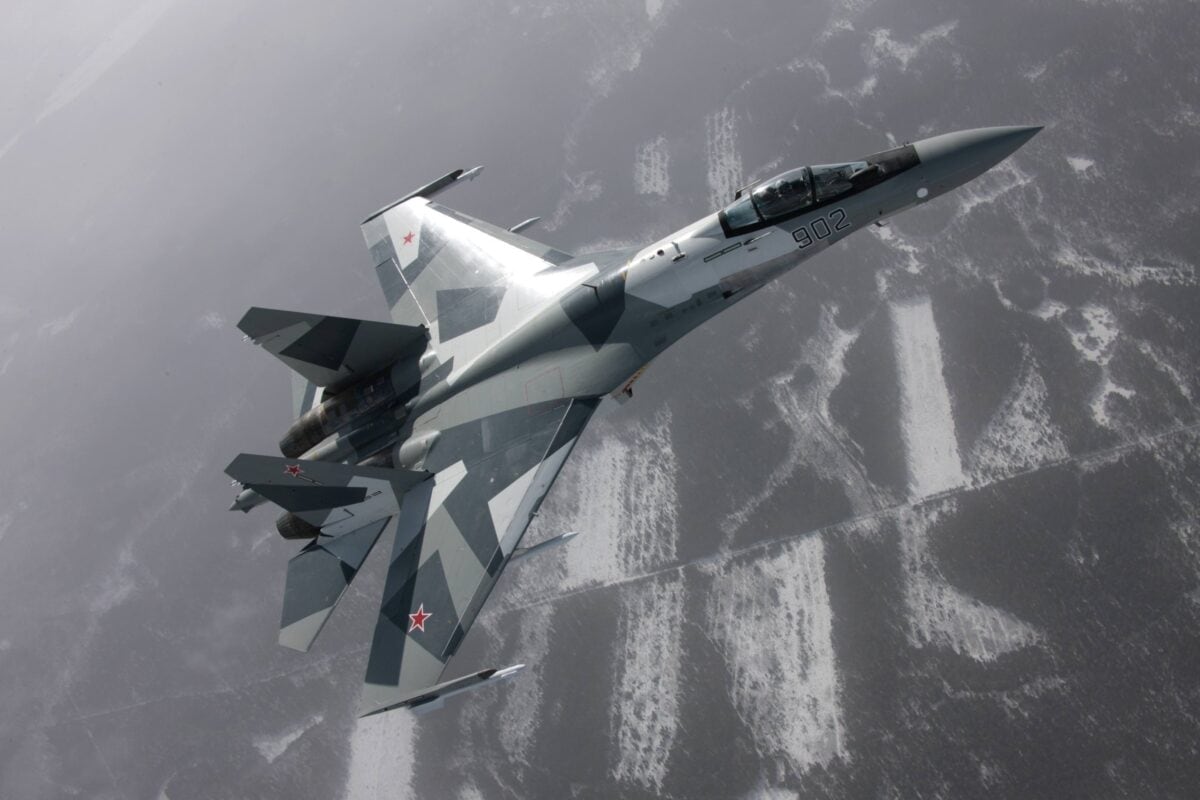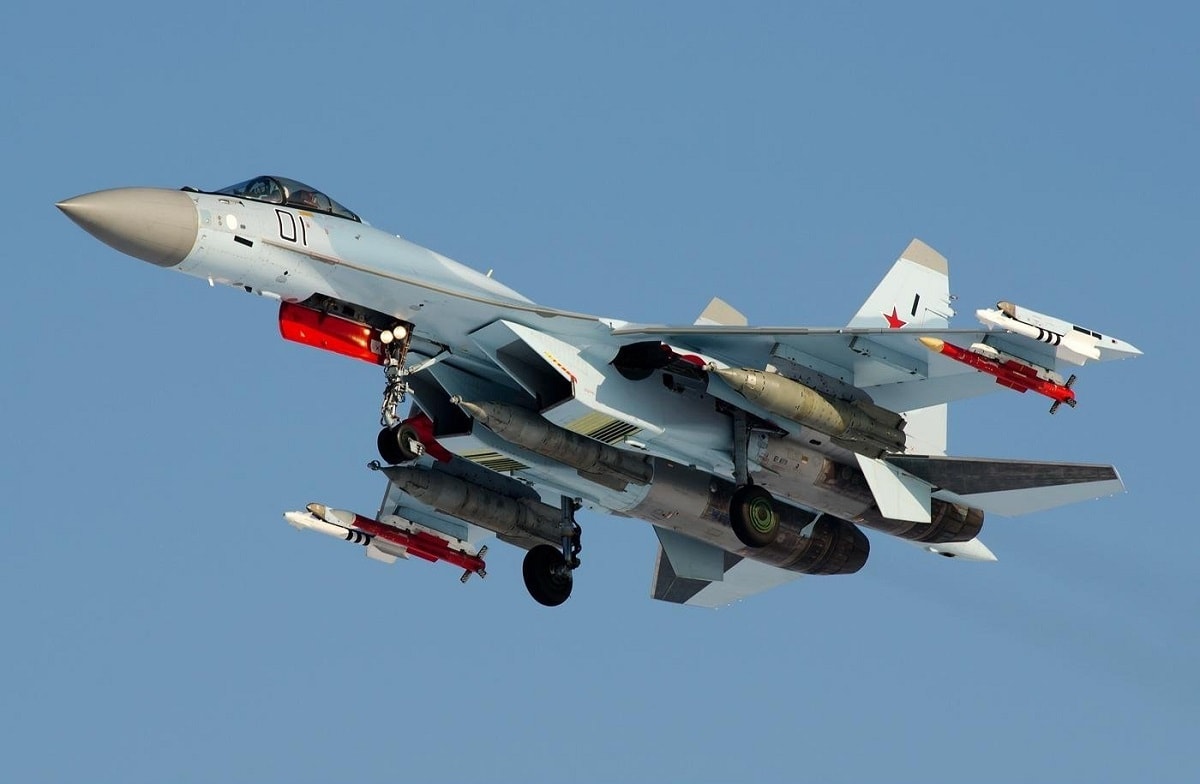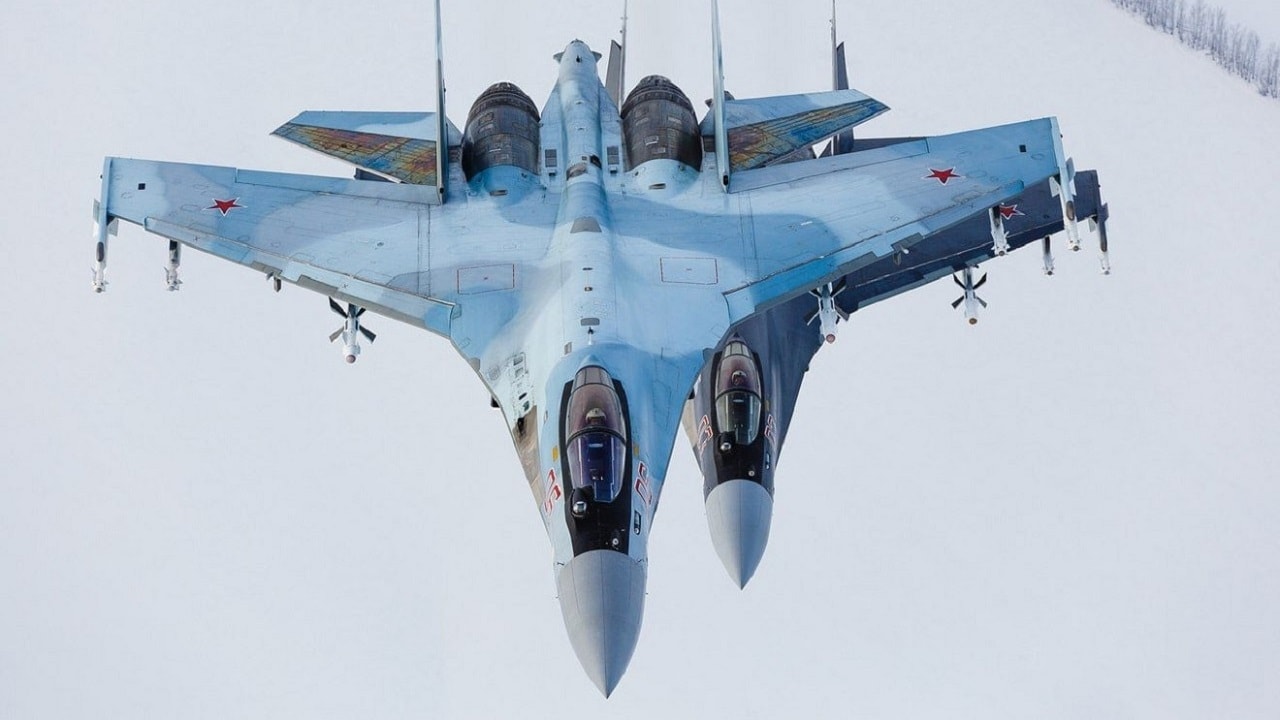It looks like two state sponsors of terror want to trade aerial platforms. Rogue states Iran and Russia are bartering fighters for drones. Russia wants Iran’s unmanned vehicles and Iran covets Russian fighter planes such as the Su-35 Flanker. This month Tehran sent Moscow the first group of drones for evaluation and testing. Meanwhile, Iranian pilots are being trained in Russia on the Su-35. Could this relationship serve as a blueprint for further assistance from China to create a formidable triumvirate?

Image: Creative Commons.
Tehran and Moscow Grow Closer
The Iran-Russia trade, revealed on Twitter on August 2, is likely being executed for the two countries to get around sanctions and to build a military bloc against the West. Washington, D.C. think tank Institute for the Study of War explained more. “This is consistent with recent reports that Tehran and Moscow are pursuing greater aviation cooperation in order to circumvent international sanctions on Russia and Iran and support Russian operations in Ukraine.”
The Trade Will Have Mutual Benefits
Russia has its eyes on the Shahed-129 and Shahed-191 combat drones. Russia’s military has had difficulty establishing air superiority over Ukraine and hopes these armed, unmanned systems can turn the tide. Meanwhile, Iran is hurting for new fighters and the Su-35 fits the bill. This trade hatched from an earlier 20-year $10 billion military agreement forged in January 2022 between the two countries.
Iran’s Military Strength Is Drone Warfare
Iran has excelled in drone combat dating back to the early 2010s when it electronically jammed an American RQ-170 Sentinel stealth unmanned system. The RQ-170 was brought down intact by the Iranians. This craft helped inspire the Saegheh combat drone and the Shahed 171 attack drone – both flying wing designs. The Saegheh once flew deep into Israeli air space in 2018 without being shot down by Patriot anti-aircraft batteries. It finally had to be destroyed by gunfire at close range as it approached Israeli defenses.
This Bartering Will Help Russian Efforts in Ukraine
Military Watch Magazine believes that Iranian experience with drones could pose a challenge for Ukrainian air defenses. “Iran’s newer stealth drones most notably the Shahed 181 and Shahed 191 strike platforms could prove particularly problematic for Ukrainian defenses, which are considerably less dense or sophisticated than those over Israel.”
Just What the Doctor Ordered for Iran
Iran wants new jet fighters as it is depending on Cold War-era designs such as the American F-14 Tomcat and the Soviet Su-22 Fitter. An Su-22 just crashed in Iran this month. An F-14 went down due to an accident in June.
Tactical and Strategic Underpinnings
There are two dimensions here for analysis. The first is the tactical aspect of the trade – if it indeed happens. The barter “scratches both itches” and will help each side with capabilities that are needed badly. Iran’s air force is woefully under-equipped while Russia’s drones have not faired well during the war in Ukraine.
The second aspect of the deal is strategic as it pertains to broader international security goals for both countries. Russia and Iran are growing closer in their relationship. This is bad news for NATO and unwelcome tidings for Israel and Saudi Arabia, plus other Gulf allies.
Russia likely wants to enhance its military hardware diplomacy with China too. China has huge security resources that could help Russia. Beijing is already buying Russian oil – providing a cash flow that helps serve to finance the war effort.

Image: Creative Commons.
Maria Shagina, a research fellow at the International Institute for Strategic Studies in London, told news outlet RFE/RL, “We’ve heard on multiple occasions that Russia and China have established a ‘no-limits’ partnership, and recently [on June 15], Xi reiterated support for mutual cooperation with Russia.”
Axis of Evil 2.0
This is a new axis of anti-Western countries that are uniting during the war in Ukraine. There may be more military trades and diplomacy among the three American adversaries to build a stronger alliance. The United States and NATO should watch these developments closely as the three countries in question grow closer together.
Now serving as 1945’s Defense and National Security Editor, Brent M. Eastwood, PhD, is the author of Humans, Machines, and Data: Future Trends in Warfare. He is an Emerging Threats expert and former U.S. Army Infantry officer. You can follow him on Twitter @BMEastwood.

